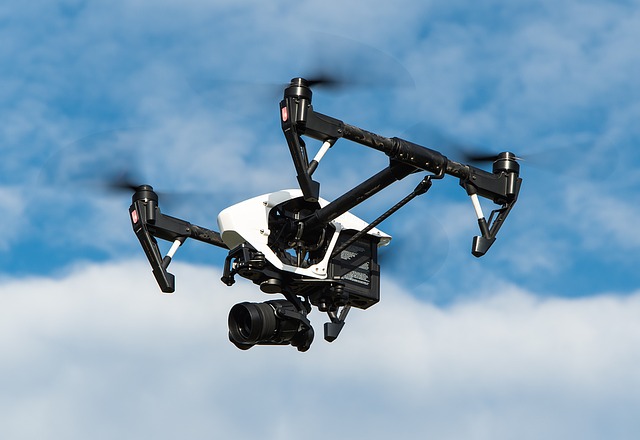Last Christmas was kind to me, and I received the gift of my very own DJI Phantom quadcopter. I was super excited and couldn’t wait to get it flying. However, due to my years of developing systems design requirements for autonomous vehicles, I knew that when I flew my own drone, it would not be as straightforward as I expected.
Here’s what I learned about what they don’t tell you in the instruction manual.
1. Wind is the enemy.
With large fixed wing drones, their sheer size overcomes most weather conditions. With the sort of quadcopters that you can buy in stores, any wind that is strong enough to move the branches on trees will prevent you from controlling your drone safely.
Christmas, in fact Winter, is not a good time to get a drone if you want to fly it. October through to the end of April are the best times to fly a kite, but the worst times to fly your drone.
Wind will blow your drone away, into trees, or just cause it to lose control. Even with GPS position fixing turned on, my Phantom quadcopter is not powerful enough to stay in place.
I know that I require a nice still day to fly my drone. When one comes along, I am outside looking for places to takes some phenomenal pictures.
2. Drones don’t stop immediately.
[amazon_link asins=’B01LW5CJGY’ template=’ActiveOutdoors-ProductAd’ store=’activoutdo-21′ marketplace=’UK’ link_id=’319fcfdb-cc56-11e7-b6ec-5bf3e7ba6826′]
With remote controlled cars, you can get them to stop quite quickly. When you are controlling something that flies through the air, you have to plan ahead if you want to stop it.
There is a huge temptation to see how fast it will fly, but when you try to stop it, you will find that it will continue on for several metres before stopping or changing direction. This is not good if you are flying near obstructions such as trees or buildings. This is one of the reasons that the UK CAA laws on flying drones states that you must be more than 50 metres from any structure, vehicle or person.
I use GPSVisualiser to draw lines on a Google Map to see where I need to fly to stay beyond the 50 metre limit.
3. There are laws that limit what you can do with your drone.
The UK Civil Aviation Authority has some very clear laws on what you can and can’t do with your drone. Local bylaws also prohibit you from flying. For example, you cannot fly in the New Forest, or in Yellowstone Park in the US. You also cannot fly in urban areas.
Another good part of the law is to always maintain line of sight with your drone.
4. Make sure you can always see your drone.
[amazon_link asins=’B01LZBI3FY’ template=’ActiveOutdoors-ProductAd’ store=’activoutdo-21′ marketplace=’UK’ link_id=’6a0d9cb5-cc56-11e7-984c-2305f492bf37′]
It can be very tempting to fly out of sight and use the camera feed to see where you are flying. I think that the CAA law is a good one, but didn’t realise some unexpected consequences of not following it as one guy in Utah found out. He flew his drone around a massive rock stack, and when the drone went out of sight, it also lost radio contact with his controller. The drone went into failsafe mode which meant return to the launch location.
Unfortunately this meant that it flew in a straight line straight into the rock stack and crashed. If your drone is set to return back to you when the battery is running out or if it loses contact, it is a good idea to make sure that it has a clear direct straight line path back to you. So, another reason to keep it in sight.
5. Make sure you have enough battery life to fly your drone back to you.
There are countless Youtube videos of people flying their brand new drones beyond its 10 minute battery life and never seeing it again. The most popular error is doing so over water.
This YouTube clip shows how one drone owner dives into icy cold water to catch his drone before it lands in the water due to running out of battery power.
My First day with my Drone
6. Where is your failsafe GPS location?
I know a couple of drone enthusiasts who tested out what happens when you turn the controller off. Unfortunately, the GPS home location hadn’t been set, and the drones headed off for the factory, never to be seen again.
Many drone pilots also try to see how far away they can fly their drone. High or far, if the battery runs out or it loses contact, you may not get it back.
7. You get confused which way to turn when your drone is facing towards you.
Which way is left? When you turn your drone around, left is not your left anymore. Really confusing until you develop that visual-spatial skill.
8. Don’t panic and over compensate on the controls.
When you first fly, do it in a wide open space. Once you have taken off, be gentle with the controls until you get a feel for moving your drone around. If you fly near obstructions, it is quite easy to panic and overcompensate. The drone then zips off in the opposite direction, usually into another tree.
9. Propeller Guards are Worth the Money
After my first experience of drone meets bush, and then not quite getting it to land flat, I looked into ways to protect the propellers from damage. You can buy propeller guards for the DJI Phantom from Amazon which just attach using screws which should be provided. Easy to fit, and make landings much easier.
Good Luck!
[amazon_link asins=’1514708426′ template=’ActiveOutdoors-ProductAd’ store=’activoutdo-21′ marketplace=’UK’ link_id=’b9b26776-cc56-11e7-ad73-d3db105e32f8′]
If you want a more detailed guide book, I found this one is most helpful. I hope that you have many happy hours with your drone, whilst you still have one…
